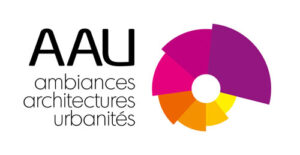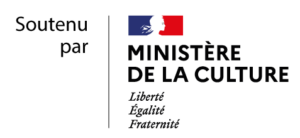Ricardo Atienza, Architect. PhD in Urban Studies/Architecture. Guest Lecturer at Konstfack, University of Arts and Crafts, Stockholm, Sweden. Associate researcher at Cresson research group, France. Damien Masson, PhD in Urban Studies/Architecture. Associate researcher at Cresson research group, France
How to evaluate in situ the impact of audio announcements in a place of intense public use such as the underground? We recently addressed this issue in a research project1 requested by RATP (Company of Paris Undergournd) that questioned the understanding of these auditory messages by passengers, in order to propose possible improvements. To this purpose, we implemented an inquiry method that combined daily experience and simulacrum, in order to collect the impressions of subway travellers when hearing the diffused sound messages. Announcements were thus not solely evaluated in terms of their understanding, but also on their « practical effect », i.e.: what does an announcement provoke in the course of an action?
The simulacrum as a basic principle for a » situated simulation »
Because of the impossibility to broadcast fictitious messages in the populated underground, we developed a protocol based on a principle of imitation in order to evaluate specific sound announcements in the subway.We thus composed different sound messages that were listened by voluntary respondents in a Paris underground station, using for this a sound portable player. They were then invited to make sonic crossings, i.e. performing walks in which the introduced sound environment overlays (and sometimes replaces) reality while trying to remain as close as possible to it. The announcements and the “scenarios” were prepared in advance, as follows:
Announcements staging
Recorded in conditions close to those of a studio, the following message was presented to respondents using an iPod equipped with « permeable » earbuds.
In order to properly integrate this message in the sonic environment of the survey situation, and thereby assess its reception as accurately as possible in a real situation, this message had to be staged. Thus, a set of filters have been used to reach the broadcasting conditions of a metro station, characterized in particular by reverb (due to the architectural specificities of the space) and filtering (due to audio diffusion equipment).
In a third step, the message was « dressed up » with the sound background corresponding to the environment of the inquiry: on the following extract, one of the galleries from Châtelet station.
In situ
Our methodological intention is to place the interviewees in an almost daily/ordinary condition. By doing so, the sound announcements are not only evaluated for the message they carry, but their effects are rather observed on the course of an action: a respondent placed in the situation of an everyday passenger facing an audio message while he/she is moving. We thus try to approach a « role-play » situation, where the person’s involvement in the action (his/her intention in this case) becomes essential. This protocol allows the creation of an experimental situation for the reception and later evaluation of audio announcements, while enacting in the closest conditions to the reality of their environment. For this, it was particularly useful to propose the interviewees to hear the messages in motion through diverse sonic environments (tunnels, platforms, escalators) in order to: 1) avoid the careful listening facilitated by the technical instrumentation, and especially 2) stage a deeply transformed situation – and not just an idea of it. Our observations point out the pragmatic effect of the protocol used. We indeed noticed a set of attitudes related to the emergence of these messages in situation:
- Modifying the focus of attention: on other people actions, on the movement, on « reliable » information (i.e. network map, iPhone, monitors, subway workers);
- Changing the direction of motion: space exploration, jerked steps;
- Uncertainty of choices related to action: following the travellers’ global movement or stopping to wonder about the “next move”?
These attitudes clearly show the potential effects of specific announcements and highlight thereby a key issue concerning situated information (sonic, or any other kind): their ability to guide the body. Therefore, this work incites a reflection on the relationships between information and situated action and raises the question of the “ambient” effects of contextualized information.
1. Cf. ATIENZA R. & MASSON D. (2010, à paraître). Des annonces à l’ambiance. Qualification et amélioration des situations de diffusion et de réception des annonces sonores dans le réseau ferré de la RATP. Rapport de recherche. Vincennes : RATP Département Développement Prospective



